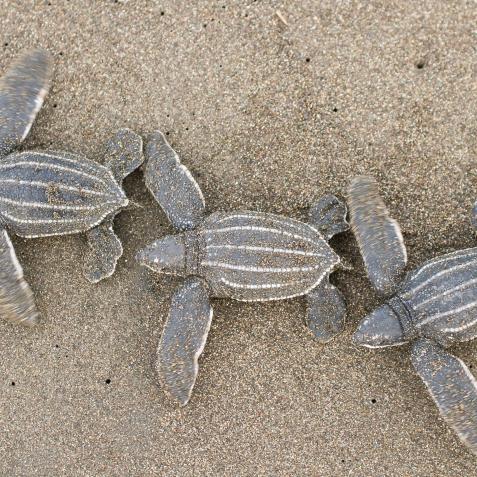
Some Male Cuttlefish 'Cross-Dress' to Woo the Ladies
Here's the scene: The beefy jock is the big man on campus, even though he's a huge jerk. Maybe it's because he could beat pretty much anyone up, or maybe it's because ... no, it's definitely the beatings. Nobody wants to get on his bad side, and just to make him extra scuzzy, he's also dating six girls at once (who don't seem to like him much either). But there's a solution to everyone's problems that's straight out of an '80s comedy — and all it takes is for a male nerd to get lovesick enough to dress up as a woman. Welcome to the gender-bending world of cuttlefish courtship.
Some (Cuttlefish) Like It Hot
Like octopuses, cuttlefish are cephalopods, though their tentacles are much shorter and their bodies are more arrowhead-shaped. They also set themselves apart with their incredible color-changing ability — one of the best in the animal kingdom. And every winter, about a quarter-million giant Australian cuttlefish gather in a tiny spot about the size of ten soccer fields for one reason: to get biz-zay.
But among the males, competition is fierce. On average, males outnumber females by 4-to-1, though some scientists cite this figure as being as high as 11-to-1. As you'd expect, some of those dudes fall more towards the linebacker side of the musclebound spectrum, while others have the raw physicality of a cuttlefish mathlete. The result? The linebackers have a tendency to fight off the mathletes and harangue the most desirable females in order to pressure them into hanging around. Where's the romance?
But the males who have been locked out actually have another option available, thanks to their chameleon-esque superpower. They alter their coloration to resemble that of the female of the species, and retract their extra ... ahem ... "tentacle" in order to trick the jocks into thinking they're just another swooning belle. Sometimes, they also make like they're already carrying an egg around in order to dissuade the big guys from attempting to mate. (There have even been rare instances where scientists have seen a cuttlefish park between a male and a female and split the difference, displaying female markings to the male and male markings to the female.) Once they've infiltrated the clique, they're free to woo any receptive female — and more often than not, the beleaguered females are more than happy for a break from the meatheads.

Brains Over Brawn
Here's where it gets really interesting. Male cuttlefish don't fertilize the females' eggs directly; they only give the female their sperm, which she then uses to fertilize the eggs after she's laid them. That means that when a female mates with several different males, she can choose which males' seed she wants to sow.
As it turns out, female cuttlefish are quite picky, and even though they'll only see one mating season in their lifetime, the females reject about 70 percent of all mating attempts outright. But they make an exception for the "cross-dressers." Females only reject them about 35 percent of the time, and when it's time to fertilize their eggs, they show a clear preference for the tricksters.
That could be because it takes brains to fool the competition. "Maybe the females like intelligence. Like, 'Hey, that was pretty smart,'" said squid biologist Dr. Sarah McAnulty on the Ologies podcast. "So if we're ever like: How did those cephalopods get so smart? Well here's one way they're choosing for it."
This article first appeared on Curiosity.com.


















